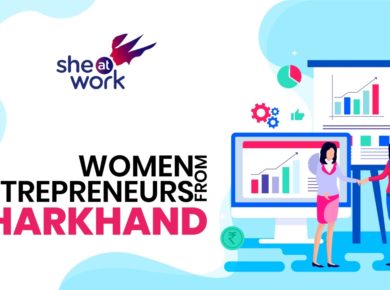The year that was 2020 was unlike anything that the world had witnessed and was riddled with challenges throughout, but there were learnings.
Entrepreneurship is a tough nut to crack, especially for women. So far, we had seen women taking the plunge and forging ahead. In many ways, they proved to rewrite the game of business.
Statistics had revealed a positive trend for women. In February 2020, a report by Google and Bain & Company revealed that women’s entrepreneurship can help advance the cause of financial inclusion of women in India. It threw light on the fact that 13.5 to 15.7 million women-owned enterprises make up 20 percent of all enterprises in India – a rise from 14 percent to the current 20 percent over the last decade. Additionally, a recent research paper released by the International Monetary Fund (IMF) observed that efforts to create equality between men and women could lead to a gain of 6.8 per cent in India’s GDP.
Budget 2020 presented by Nirmala Sitharaman, India’s first woman finance minister, announced that women self-help groups in villages will be supported by the government’s MUDRA scheme and by NABARD. As part of the government’s ‘Atmanirbhar Bharat Abhiyan’, the economic package introduced during the pandemic, opportunities were announced for MSMEs and SMEs, including those led by women, to further their businesses.
But, then the lockdown happened. 2020 will go down in history as the year the pandemic stole upon the world. Covid-19 brought in a new normal and affected every area of our lives. It had an immediate impact on women entrepreneurs.
Ongoing crisis in the lives of women entrepreneurs
As the lockdown advanced, it was seen that there was an ongoing crisis in the lives of women entrepreneurs. Women-owned businesses experienced a massive decline in revenue. Research showed that 73% women entrepreneurs have been negatively impacted by the crisis, with almost 20% witnessing their business revenue nearly wiped out! Even businesses that did not see an immediate decline in revenue, the growth was minimum. Businesses that were primarily reliant on offline production or delivery models experienced a far greater decline than those which were attached to digital channels. Increase in revenue was driven by two factors: increased relevance of specific products and services during the crisis, and a rapid realignment of the business model to address immediate needs.
After an abrupt drop in March and April due to the lockdown, growth in businesses was seen to be about one-third of pre-Covid 19 levels. Businesses that recovered fast, were those that had already experimented with or adopted digitalisation in various parts of their business model.So, the reality today is that most of the entrepreneurs’ businesses have not returned to pre-Covid 19 levels.
The new normal is WFH. With the business world locked in, working remotely appears to be effective, but is offset by an increase in domestic responsibilities. Operating from home, while enabling greater flexibility under ordinary circumstances, has had a mixed impact on women entrepreneurs during the crisis. It was marked by higher productivity for some, but some experienced a drop (which was attributed largely to increased domestic responsibilities & distractions).
Learning from the crisis: adapting to uncertainty
Fortunately, a positive note seen was that some women entrepreneurs have aggressively adapted their businesses to resist the short-term impact of Covid-19.
Adapting to the changed circumstances, some women entrepreneurs were quick to realign their business models for greater relevance (in response to Covid-19). Business model shifts included new products or services, digital sales and delivery channels, as well as a reoriented supply chain and sales & marketing function. Entrepreneurs also focused on retraining themselves (and their team) by learning new skills to adapt to this change.
Some women-owned enterprises, who were service-oriented, smaller and less capital-intensive, witnessed faster adaptation to the changing environment (as opposed to larger or more capital-intensive businesses). Examples of such pivots included apparel manufacturers who transitioned to manufacturing safety equipment (masks, gloves, PPE kits), coaching centres and gyms that expanded their reach dramatically by holding “virtual classes,” and food and beverage businesses who tried to reach a wider audience digitally.
Despite the shrinkage in overall business, entrepreneurs are optimistic about bouncing back. 90% entrepreneurs believe they will be able to survive the crisis. 80% of entrepreneurs expect demand to bounce back to pre-lockdown levels by March 2021. So, here’s looking ahead to happier times in 20121.










